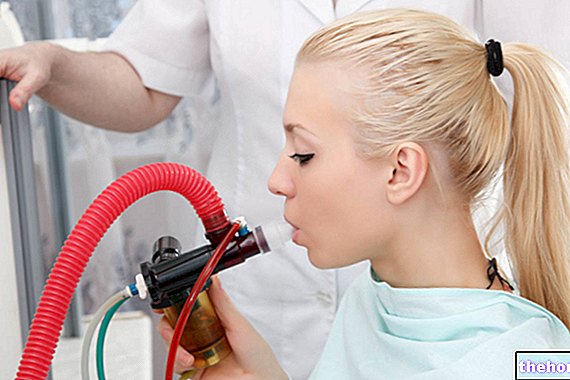What is Cystinuria
Cystinuria is an autosomal recessive genetic disorder that affects one in every 600 to 10,000 individuals;

Aminacids involved
From the anatomical-functional point of view, cystinuria is a congenital tubular defect that causes "insufficient renal reabsorption of cystine, lysine, arginine and ornithine.
- Cystine: is a sulphured amino acid obtained by the oxidative reaction of two cysteine molecules. It is present in many proteins, of which it influences the tertiary structure, and is also involved in the formation of gluten. Cystinuria is easily recognizable thanks to the levels of cystine excretion, which in the healthy subject reach about 80mg / day, while in the cystinuremic However, cystine does not represent an essential nutrient or of which it would be necessary to monitor the recommended intake rations, in fact it is synthesized from scratch from two molecules of cysteine, an amino acid deriving from L-methionine.
- Lysine: is an essential amino acid. Its biological roles are many: synthesis of L-carnitine, synthesis of collagen, precursor of niacin (vit. PP) ...
- Arginine: is an essential amino acid in children. Its functions are creatine precursor, hepatic detoxification of nitrogen groups, nitric oxide precursor ...
- Ornithine: derives from arginine and is a fundamental product of the urea cycle in which it allows the elimination of excess nitrogen; it is also involved in protein synthesis.
NB. Some experiments have shown that in cystinuria, in addition to renal loss, there is also an alteration in the intestinal absorption capacity of these amino acids.
Complications
For further information: Symptoms Cystinuria
Considering that cystine and cysteine are NOT particularly difficult amino acids to introduce with food, and that they are quite simple to synthesize, urinary amino acid loss would be more serious if it involved lysine and possibly arginine; nevertheless, the plasma amino acid depletion caused by the tubular defect of the kidney is NOT the most relevant aspect in cystinuria.
Observing the chemical nature of the amino acids involved, it emerges that, while lysine, arginine and ornithine are found to be SOLUBLE in the acidic fluid of the urinary tract, cystine is NOT, consequently it tends to CRYSTALLIZE.
NB. The cystine crystals present in severe cystinuria can also be examined in fresh urine not treated in the laboratory, while qualitative (nitroprussite) and quantitative (paper or column chromatography) investigations are required for the less important forms.
Stones of cystine
In case of cystinuria, the cystine crystals can precipitate and give rise to kidney stones which, in the most problematic cases, evolve into RADIO MOLD CALCULATIONS VISIBLE and scrutinized by blank radiography of the abdomen. Remember that kidney stones often cause obstruction and INFECTION of the urinary tract but, although cystinuria represents only 1% of all clinical manifestations of kidney stones, it assumes a more relevant importance in the onset of kidney stones.
Treatment of stones in cystinuria
In cystinuria with related kidney stones, the most successful preventive treatment applied is hyperhydration and alkalinization of the urine, while as regards drug therapy, the most recently studied molecule is D-penicillamine. In the most serious cases it is advisable to associate the alkalinization of the urine and the hyperhydration to drug therapy, also undertaking a restrictive dietary therapy towards the amino acids METHIONINE AND CISTEINE.
Hyperhydration: periperhydration means (improperly!) The "increase in the dietary hydrosaline intake with the aim of further diluting the plasma, favoring diuresis. With this device it is possible to reduce the crystallization of cystine and the formation of crystals. See: Treatment hydroponic
Alkalization: alkalizing the urine is a process of voluntary modification of the pH of the renal filtrate, therefore of the blood. Pharmacological research has experimented with various active ingredients that allow to obtain variations of the filtrate ranging from 5 to 8.5 (where the neutral is 7); among these molecules, the most used are undoubtedly the inhibitors of carbonic anhydrase, citrates and bicarbonates. It is also essential to keep in mind some dietary rules useful in the alkalization process:
- Water supply equal to at least 1ml / kcal of energy introduced
- Supply of mineral salts and alkalizing trace elements
- Limitation of protein excess
- Avoidance of acidosis induced by ketogenic diets
- Restriction of alcohol and coffee
Restrictive dietary therapy of methionine and cysteine: in which it is important to limit or eliminate foods that contain exceptional quantities of methionine and / or cysteine; among these: spirulina algae, soy protein powder, egg powder, parmesan, walnuts, tuna, chicken breast ... € and all other highly protein foods.
Bibliography:
- Atlas of physiopathological and clinical anatomy. Volume 5 - Endocrine system and metabolic diseases - Frenk. H. Netter - page 243 - Masson




























